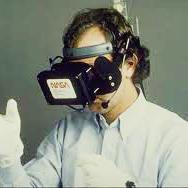Because of the occurrence of severe and large magnitude earthquakes each year, earthquake-prone countries suffer considerable financial damage and loss of life. Teaching essential safety measures will lead to a generation that can perform basic procedures during an earthquake, which is an important and effective solution in preventing the loss of life in this natural disaster. In recent years, virtual reality technology is a tool that has been used to educate people on safety matters. This paper evaluates the effect of education and premonition on the incorrect decision-making of residents under the stressful conditions of an earthquake. For this purpose, a virtual model has been designed and built from a proposed classroom in a school of the city of Tehran. Accordingly, two educational scenarios, presented in reality and the virtual model respectively, were conducted on a statistical sample of 20 students within the range of 20 to 25 years of age. Within the mentioned sample, the first group of 10 students were taught safety measures in a traditional classroom. The second group of 10 students participated in a virtual classroom. Evaluation tests on safety measures against earthquakes were distributed after two weeks. Furthermore, two self-reporting tests of Depression, anxiety, stress test (DASS), and Beck Anxiety Inventory (BAI) were assigned to the second group to evaluate the effect of foresight under two different scenarios. The results show that educating through virtual reality technology yields a higher performance level relative to the traditional approach to education. Additionally, the ability to detect earthquakes ahead of time is an influential factor in controlling stress and determining the right decisions should the event occur.
翻译:由于每年发生严重和大规模的地震,容易发生地震的国家遭受巨大的财政损失和生命损失。教授基本安全措施将导致一代人能够在地震期间执行基本程序,这是防止这场自然灾害中丧失生命的重要和有效解决办法。近年来,虚拟现实技术是一个工具,用于对人们进行安全教育;本文件评估了教育和预感对地震紧张条件下居民不正确决策的影响。为此目的,从德黑兰市一所学校的一个拟议的教室设计并建造了一个虚拟模型。因此,在现实中和虚拟模型中分别提出的两个教育场景,对20至25岁左右的20名学生进行了统计抽样调查,这是预防这场自然灾害中丧失生命的重要和有效解决办法。在上述抽样中,第一组10名学生在传统的教室里教授安全措施。第二组10名学生参加了虚拟教室。关于地震安全措施的评估测试在两周后分发。此外,两次关于抑郁、焦虑、压力测试(DASS)和贝克·安克斯海利研究(BAIS)的自我报告测试,分别在现实中提出,在20至25岁之间对20名学生进行虚拟教育。在现实评估中,通过虚拟分析结果,对地震的成绩进行两次评估。通过虚拟分析,对地震进行结论分析,对结果进行结论分析。通过两次评估,对结果进行结论分析,对结果进行结论分析,对结果进行结论分析,对结果进行结论分析,对结果进行结论分析,对结果进行结论分析,对结果进行结论分析。通过。



